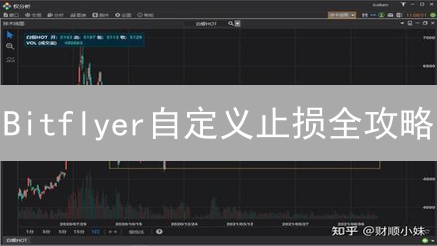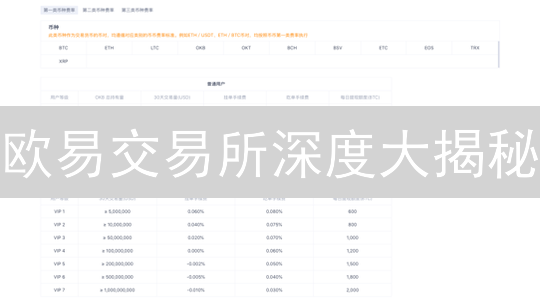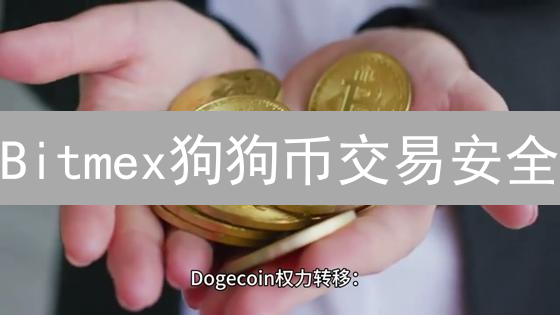杠杆的双刃剑:火币交易风险管理
夜幕降临,城市灯火辉煌,而屏幕前的李明却眉头紧锁。他盯着火币交易平台上的K线图,心如擂鼓。他使用了高倍杠杆,希望一夜暴富,却没想到市场波动剧烈,他的仓位正在快速亏损。
李明并非孤例。火币平台上的杠杆交易吸引着众多投资者,他们被高收益的诱惑所吸引,却往往忽视了背后的巨大风险。杠杆交易犹如一把双刃剑,可以放大收益,但也可能导致亏损迅速扩大。
在火币平台上进行杠杆交易,风险管理显得尤为重要。以下是一些关键策略:
1. 深入理解自身风险承受能力:
杠杆交易,这一金融工具因其能够放大投资回报而受到部分投资者的青睐。然而,它同样伴随高风险,并非适合所有投资者。在投入资金之前,投资者必须进行详尽的风险评估,以确保自身具备相应的心理准备和财务能力来应对可能出现的亏损。
投资者应明确自身的财务状况和目标。了解自己的收入水平、储蓄状况以及投资目的对于评估风险承受能力至关重要。
投资者需考虑个人的生活状况和家庭责任。例如,有家庭抚养义务的投资者相较于单身者可能更倾向于选择低风险的投资策略。
心理素质也是评估风险承受能力的关键因素之一。一些投资者可能在面对市场波动时表现出过度焦虑或冲动行为,这将加剧其投资风险。
建议投资者在决策前咨询专业的财务顾问或投资顾问,以获得个性化的建议和指导。通过综合考虑上述各方面因素,投资者可以更准确地判断自己是否适合使用杠杆交易这一工具。
2. Choosing an Appropriate Leverage Multiplier:
Huobi platform offers a variety of leverage multipliers ranging from low to high levels. Selecting an appropriate leverage multiplier is crucial for managing risk and optimizing potential returns. High leverage can significantly amplify profits, but it also increases the risk of substantial losses.
For beginners, it's advisable to start with lower leverage multipliers and gradually increase them as you become more comfortable with trading strategies and market dynamics. This approach allows for a smoother learning curve and helps in building confidence without exposing oneself to excessive risk.
It's important to understand that leverage is a double-edged sword; while it can enhance your trading performance by allowing you to control larger positions with less capital, it also magnifies both gains and losses. Therefore, careful consideration of your risk tolerance and investment goals is essential before deciding on the leverage level.
Huobi provides tools and resources that can assist you in making informed decisions about leverage usage, such as real-time risk assessments and educational materials on leveraging strategies. Utilizing these resources can help you make prudent choices that align with your financial objectives.
3. Implementing a Robust Stop-Loss Strategy:
Stop-loss strategies are essential tools for safeguarding capital in trading activities. Before initiating any trade, it's crucial to establish a predefined stop-loss level that defines at what price you will exit a position if it moves against your expectations. This proactive approach helps mitigate potential losses by limiting your exposure to adverse market movements.
Understanding Stop-Losses:
- Definition: A stop-loss is an order placed with a broker that automatically sells an asset if its price falls below a certain level.
- Purpose: To protect against significant losses by exiting a losing trade before it escalates.
-
Types of Stop-Losses:
- Mechanical Stop-Loss: Based on predefined rules such as percentage loss or fixed price levels.
- Momentum-Based Stop-Loss: Adjusts based on recent price movements and volatility.
- Dynamic Stop-Loss: Uses algorithms to adjust stop-loss levels in real-time based on market conditions.
Benefits of Using Stop-Losses:
- Limits Losses: Prevents significant capital from being lost in unfavorable market conditions.
- Maintains Discipline: Enforces discipline by adhering to predefined exit points regardless of emotional impulses.
- Increases Profitability: By cutting losses early, it allows traders to focus on profitable trades.
Implementing Effective Stop-Loss Strategies:
- Determine Appropriate Levels: Set stop-loss levels based on your risk tolerance and investment goals. For instance, if you're risk-averse, you might set tighter stop-losses.
- Consider Market Conditions: Adjust stop-loss levels dynamically based on market volatility and trends.
- Patchwork Implementation: Combine multiple stop-loss strategies to create a comprehensive risk management plan.
Examples of Stop-Loss Usage:
- Intraday Trading: Traders might use mechanical stop-losses at specific percentage levels (e.g., 2% loss) to exit positions quickly during volatile intraday sessions.
- Swing Trading: Utilizing momentum-based stop-losses can help traders adjust their exit points based on recent price action and volatility spikes.
- Hedging Strategies: Incorporating dynamic stop-losses allows traders to manage multiple positions simultaneously by adjusting their risk exposure in real-time.
Tips for Successful Stop-Loss Execution:
- Avoid Emotional Decisions:** Stick strictly to your predefined rules regardless of short-term market fluctuations.
- Precision in Setting Levels:** Ensure that your stop-loss levels are precise enough to capture meaningful price movements without being too tight or too loose.
- Diversification:** Use multiple types of stop-loss strategies to enhance your overall risk management framework.
In conclusion, incorporating a well-thought-out stop-loss strategy is fundamental for any trader aiming to protect their capital effectively. By understanding different types of stop-losses and implementing them thoughtfully, traders can navigate market uncertainties with greater confidence and control over their investments.
4. 控制仓位规模:
在投资决策过程中,合理分配资金以降低整体风险至关重要。避免将所有资金投入单一交易品种,因为这种做法极大地增加了潜在的损失风险。通过分散投资,即在多个不同的资产类别或市场中分配投资资金,投资者可以有效减少任何单一投资失败带来的影响。
除了分散投资外,控制单个仓位的规模同样重要。过度集中投资于某一品种可能会放大市场波动对投资组合的影响。因此,建议投资者在构建投资组合时,应根据个人的风险承受能力、市场状况以及具体的投资目标来确定每个交易品种的资金比例。
例如,对于风险承受能力较低的投资者,可以将更大比例的资金分配给相对稳健的投资品种,如债券或货币市场基金;而对于愿意承担更高风险的投资者,则可以考虑增加股票或其他高波动性资产的持仓比例。
定期审视和调整仓位结构也是必要的策略之一。随着市场环境的变化和个人财务状况的调整,原有的仓位配置可能不再适应当前的投资需求和风险偏好。因此,定期进行仓位再平衡有助于保持投资的均衡性和适应性。
5. 关注市场动态
在火币平台上,市场波动呈现出显著的不稳定性,投资者需密切关注市场动态和实时新闻资讯。这不仅包括价格波动、交易量变化等基本面信息,还涉及政策导向、行业趋势等宏观因素。通过深入分析这些信息,投资者可以及时调整交易策略,降低风险,把握市场机遇。
以下是一些关注市场动态的要点:
- 实时监控各大交易所的价格走势,对比分析不同平台的报价差异。
- 关注政策层面动态,如监管政策、税收政策等对市场可能产生的影响。
- 研究行业新闻和媒体报道,了解行业发展趋势和热点事件。
- 关注技术面分析,如K线图、成交量等技术指标的变化趋势。
- 学习其他投资者的交易策略和经验分享,拓宽自己的视野。
投资者还可以利用火币平台提供的各类工具和服务,如行情分析、交易机器人等,提高投资效率和成功率。时刻关注市场动态是成功投资的关键因素之一。
6. 利用技术分析工具:
技术分析工具是金融市场中不可或缺的工具,它们可以帮助投资者和交易者更好地理解市场走势和价格趋势。通过分析历史价格数据、成交量和其他相关指标,技术分析工具能够揭示市场的潜在模式和趋势。学习使用一些常用的技术指标,如移动平均线、相对强弱指数(RSI)、布林带等,可以显著提高你的交易决策准确率。
移动平均线是一种常用的趋势跟踪工具,它通过计算一定时期内价格的平均值来显示市场的趋势方向。相对强弱指数(RSI)则用于衡量资产的价格变动速度和强度,帮助识别超买或超卖的状况。布林带则通过计算价格的标准差来显示价格的波动范围,当价格突破布林带时,可能预示着趋势的反转。
除了这些基本的技术指标外,还有一些更高级的技术分析工具和方法。例如,动量指标、随机指标、MACD(移动平均收敛/发散指标)等。掌握这些工具和方法,可以帮助你更全面地分析市场,并做出更加明智的交易决策。
利用技术分析软件和在线资源也是学习和应用这些工具的重要途径。有许多免费和技术支持的软件可供选择,如TradingView、MetaTrader等。这些软件提供了丰富的图表类型、技术指标以及社区支持,使得学习和实践变得更加容易。
7. 不要盲目跟风:
市场上充斥着各种各样的交易信号和建议,例如社交媒体上的爆款炒作、专家预测、机器人交易等。这些信息来源良莠不齐,并非所有信息都可靠。盲目跟风可能会导致错误的决策,最终造成资金损失。你需要独立思考和分析市场情况,结合自身风险承受能力和投资目标,制定合理的交易策略。
以下是一些避免盲目跟风的建议:
- 多方核实信息来源: 仔细辨别信息的来源是否可靠,例如是否来自权威机构、专业人士或有信誉的平台。
- 理性分析市场数据: 不要仅仅依赖于情绪或个人的主观判断,要结合技术指标、基本面分析等多种方法进行综合判断。
- 制定自己的交易计划: 制定明确的投资目标、风险控制策略和交易规则,并严格执行。
- 控制投资情绪: 市场波动是正常的,不要被短期价格波动所左右,保持冷静理性。
8. 持续学习和提升:
金融市场是动态且充满不确定性的环境,投资者必须不断更新自己的知识体系与技能集,方能在激烈的市场竞争中保持优势。通过阅读权威的金融书籍、参与专业培训课程、以及密切关注行业内的专家见解和分析,可以有效提升个人的专业素养和决策能力。
李明面对着屏幕上的亏损数字不断上升,内心充满了懊恼与后悔。他深刻反思自己在进入市场前准备不足,未能制定出切实可行的风险管理计划,这直接导致了当前的不利局面。李明决心自今日起重新投入学习,系统性地掌握金融市场的核心知识和实用技能。他期望通过这一系列的努力,在未来能够更有效地控制交易风险,实现稳步的收益增长。







